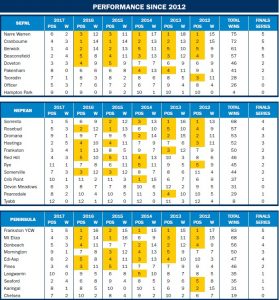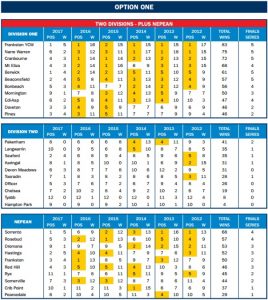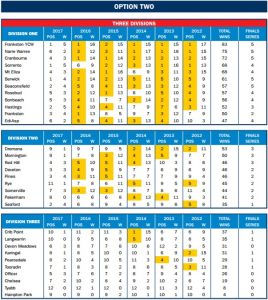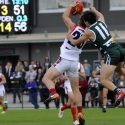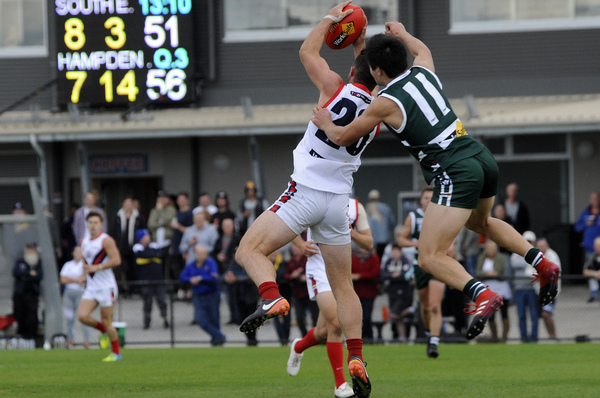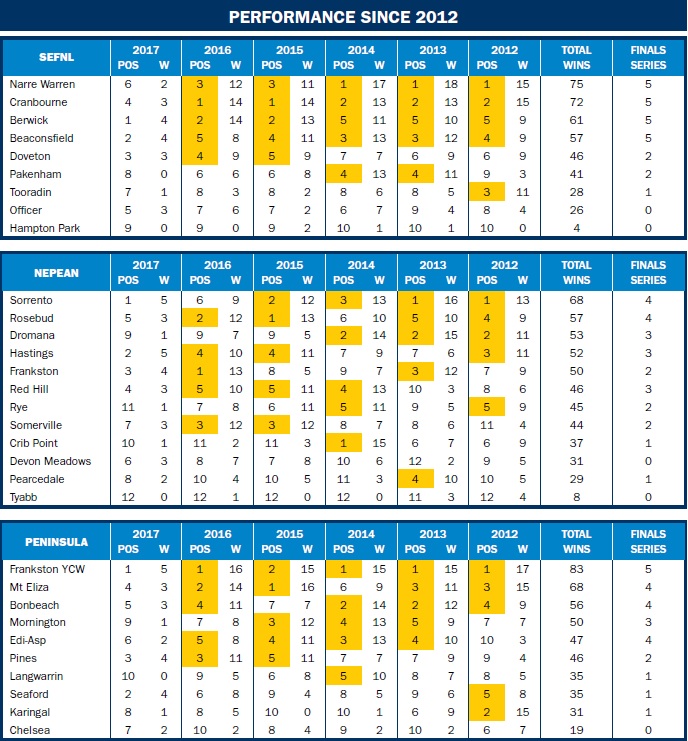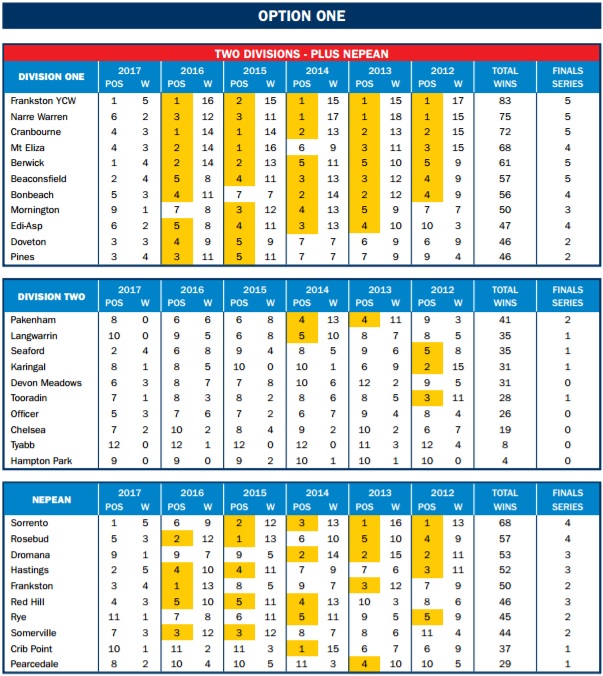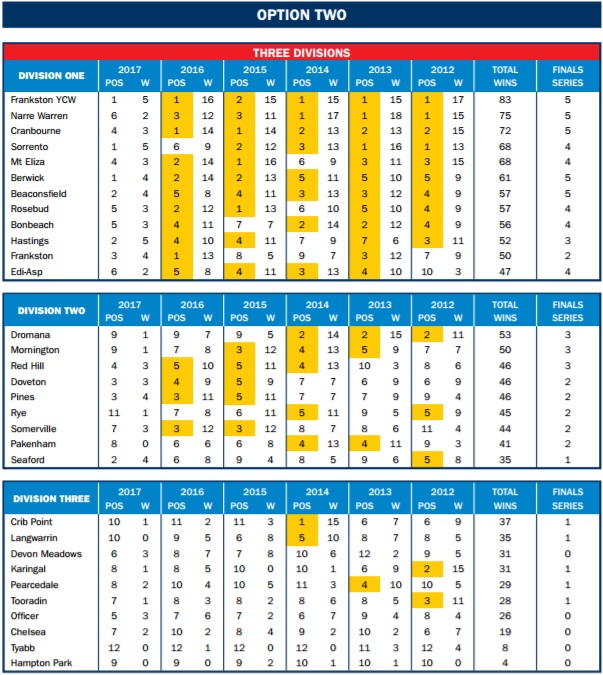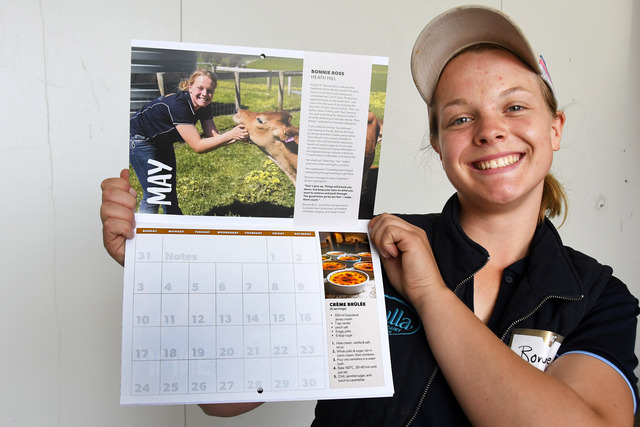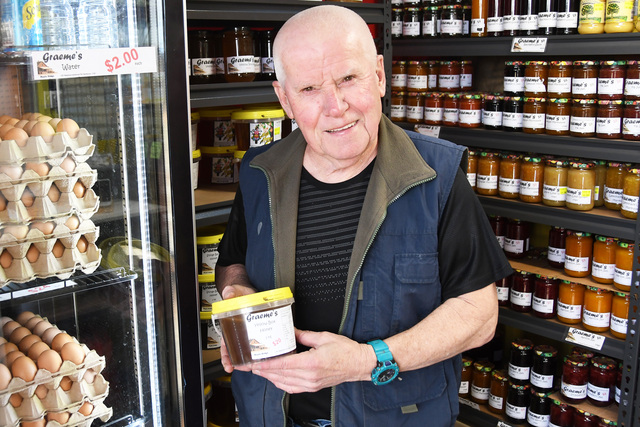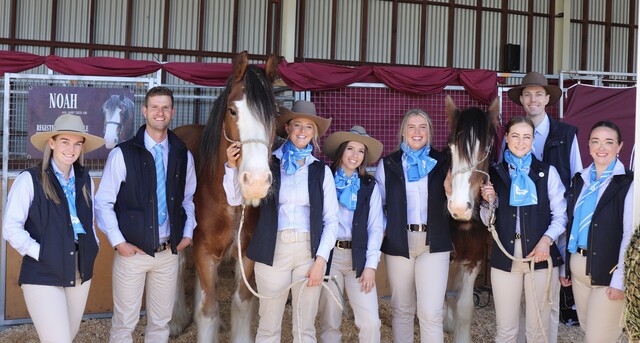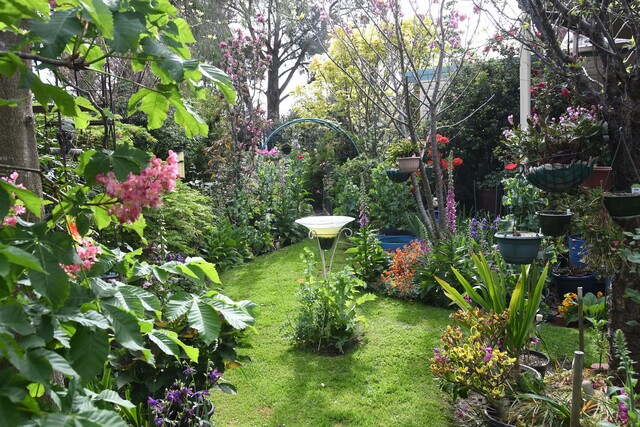By David Nagel
Welcome to football and netball’s version of Mission: Impossible.
Over the next 10 weeks, AFL South East Region General Manager John Anderson and his team will consult with key stakeholders as they look to complete a Competition Review into the 2018 season.
A total of 31 clubs, football and netball, in the Nepean, Peninsula and South East Football Netball Leagues – all run under the AFL SE banner – will receive final recommendations for the structure of 2018 after having their feedback considered.
The Review Principles are as follows:
– To investigate and explore the senior football competition structures in the South East region that will promote the sustainability of clubs.
– To investigate and explore the senior football competition structures in the South East region that will promote participation growth.
– To consider the competitive balance of the senior football competition structures for implementation in 2018.
– To consider the impact on netball in the South East region in any review findings.
A similar review was completed by the neighbouring AFL Gippsland Commission in May 2016 with a new league – West Gippsland – formed in 2017 and two of the existing five leagues being altered in structure significantly.
Make no mistake, these reviews are game changers and this one will have a significant impact on the way football looks in the south east in 2018.
First, let’s cast our eye back to 2011 when AFL chief executive Andrew Demetriou commissioned AFL Chairman Peter Jackson to conduct a Review of Football in Country Victoria.
Jackson’s findings resulted in the establishment of 13 regional commissions representing stakeholders in the region with the authority to develop the strategic plan for the regions and make independent local decisions.
AFL South East is about to use that authority.
Jackson identified another key area as critical.
“Sustainability of clubs is the critical issue, not necessarily the sustainability of leagues or governing bodies,” said the review.
“For country Victoria to maintain its status, and indeed grow, the clubs must be vibrant and financially sustainable. It is incumbent on administrators of all governing bodies, including leagues and umpire associations, to consider this for the future well-being of the clubs and the game.”
Taking these words into consideration … just what could football look like in 2018?
There’s no doubt that some clubs, in all three leagues, are suffering with competitive imbalance and, as a result, are struggling to remain sustainable-and definitely vibrant!
Hampton Park just can’t compete with the likes of Beaconsfield, Berwick, Cranbourne and Narre Warren in the South East while Tyabb is experiencing similar pain with clubs like Sorrento and Rosebud in the Nepean League.
Chelsea, while not in the same predicament as Hampton Park and Tyabb, is also struggling with the likes of Frankston YCW and Mount Eliza in the Peninsula League.
Since the start of 2012 Hampton Park has won just four games of footy, Tyabb eight, while Chelsea has won 19 with just 10 of those coming in the last four years.
All three of these clubs enjoy keen historical and geographical rivalries with neighbouring clubs, deemed key pillars of sustainability.
But it’s just not enough to keep them competitive, and they’re not alone.
Hampton Park, Officer, and Tooradin haven’t sniffed a finals berth in the last four years, Devon Meadows and Tyabb similar in Nepean while Karingal and Seaford join Chelsea in the same boat in Peninsula.
For all the short travel times, all the convenience and monetary income of local rivalries, these teams just can’t compete with their peers.
How can a Hampton Park or Tooradin compete with the massive junior feeds of the big-four in the South East, the size of towns and the demographics of the community just some of the issues outside of their control?
Sure extra player points can address a small part of the issue, but budgets grow just as quickly and proportionately, applying more financial pressure to struggling clubs.
A possible answer is to allow all 31 clubs to find their watermark, in a divisional structure, and then we work from there.
And if divisional football is a given – we’d like to put forward two proposals.
Understandably, clubs from the southern peninsula like Sorrento, Rye, Rosebud and Dromana are currently content with their lot in life.
They don’t see a need, or have a want, to change things as they stand.
Key bigger-picture items like creating an entrance level for new clubs, or making the environment at every club vibrant through competiveness, aren’t necessarily at the top of those club’s agendas.
So here’s proposal one, based on the competitiveness of clubs since 2012.
The Nepean league stays basically as is, shrinking from 12 to 10 teams due to the departure of Devon Meadows and Tyabb, who would join those success-starved clubs from the South East and Peninsula leagues in the second tier of divisional football.
Seven Peninsula league teams and five from the South East would join forces to form the elite division one competition with every club having played finals at least twice over the last five years. The Nepean Highway clubs would get their wish while the division two clubs – none of which have played finals since 2014 – would get their chance to shine in September.
But does a two-tier divisional set up really cut it and provide all the answers?
Probably not.
Proposal two may be the answer.
Three divisions with promotion and relegation, spread from Pakenham to Sorrento, would surely fix the competitive balance part of the equation. And it would provide an entrance level for new or existing clubs looking to ply their trade under the AFL SE banner.
A two-up-two-down system of promotion and relegation would speed up any chinks, while a staggered points and salary cap system could be spread across all three divisions.
The clubs currently have 39 points and $150,000 to play with. The three divisions could have salary caps set at $160,000, $130,000 and $100,000 with player points adjusted to each clubs set of circumstances – as is currently the case today.
It would release financial pressures, and make life easier for volunteers at clubs who are trying, unsuccessfully, to match it with the big boys. All 31 clubs could turn up on a Saturday with hope, something many have not had for quite some time.
As for travel, Sorrento is the perfect case study.
This year the Sharks travel an average distance of 38 kilometres, spending 36 minutes in their cars, while a proposed draw for 2018 would see those figures climb to 56 kilometres and 49 minutes each way.
Sure some rivalries would be lost and petrol bowsers would become a little bit busier, but clubs would become vibrant and that has to be John Anderson’s number one priority.
Over to you John – good luck with Mission: Impossible. You can’t please everybody!
Next week we take a look at the impact on netball throughout the Two Bays Region.
Highlighted boxes indicate that the team played finals that year.
